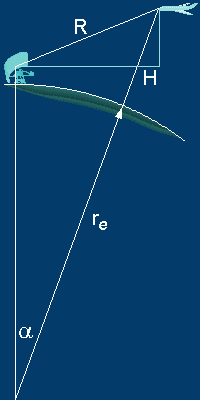 | Enter Your Electronics & Design Project for a chance to win an $200 Shopping cart of product! | Project14 Home |
| Monthly Themes | ||
| Monthly Theme Poll |
Navigation Aids what are they?
Nondirectional Radio Beacon (NDB)
- A low or medium frequency radio beacon transmits nondirectional signals whereby the pilot of an aircraft properly equipped can determine bearings and “home” on the station. These facilities normally operate in a frequency band of 190 to 535 kilohertz (kHz), according to ICAO Annex 10 the frequency range for NDBs is between 190 and 1750 kHz, and transmit a continuous carrier with either 400 or 1020 hertz (Hz) modulation. All radio beacons except the compass locators transmit a continuous three-letter identification in code except during voice transmissions.
- When a radio beacon is used in conjunction with the Instrument Landing System markers, it is called a Compass Locator.
- Voice transmissions are made on radio beacons unless the letter “W” (without voice) is included in the class designator (HW).
- Radio beacons are subject to disturbances that may result in erroneous bearing information. Such disturbances result from such factors as lightning, precipitation static, etc. At night, radio beacons are vulnerable to interference from distant stations. Nearly all disturbances which affect the Automatic Direction Finder (ADF) bearing also affect the facility's identification. Noisy identification usually occurs when the ADF needle is erratic. Voice, music or erroneous identification may be heard when a steady false bearing is being displayed. Since ADF receivers do not have a “flag” to warn the pilot when erroneous bearing information is being displayed, the pilot should continuously monitor the NDB's identification.
VHF Omni-directional Range (VOR)
- VORs operate within the 108.0 to 117.95 MHz frequency band and have a power output necessary to provide coverage within their assigned operational service volume. They are subject to line-of-sight restrictions, and the range varies proportionally to the altitude of the receiving equipment.
I will only be concerned with the three-letter identification code at this time, as this transmission is considered a slant-range which is based on a line of sight using the following formula: Rtopogr = R · cos ε, where ε represents the angle of R or Slant Range and H or Height, but this will only work if the EARTH WERE FLAT! Or you could use this model (see box): Where you have a line between the center of the antenna and the center of the Earth, this must include the published height of the antenna, which is bisected by re is defined as the distance between the center of the Earth to the height of the Where H continues to the aircraft. α is defined as an angle between the center of the antenna to the center of the Earth and re. Therefore R is the slant range!
R2 = re2 + (re + H)2- 2re(re + H) · cos α
which depends on the ratio of:
360° · Rtopogr = α · 2πre
which accounts for a spherical earth.
So let's say you are flying at 10k feet and you are headed to Meacham Field in Fort Worth and you have left Addison Airport in Addison Texas and you are on a course of 251.5 degrees NAV radio is tuned to 115.7 you would be hearing Ranger Vortac, FUZ, and Morse Code three-letter id is: '..-. ..- --..' . I have a midi file but I can't get there from here!
BTW: At 10,000ft, the horizon at approximately 100nm; At 20,000ft, the horizon at approximately 140nm; At 30,000ft, the horizon at approximately 170nm.
Software:
#define PI 3.14159
float R // Slant Range
float Re // Distance from the center of the Earth to the surface along the vector to the aircraft
float H // A line from the center of the antenna
float a // The angle between Re and the antenna
float square ( float value ) {
return ( value * value ); }
float slantRange (){
R = square( Re ) + square ((Re + H)) - 2 * Re * (Re + H) cos( a );
return square (R); }
float Rtopogr ( float R, float H) {
/* Rtopogr is determined by ε, the angle which is unknown, and Height
* the Base of the triangle is from the center of the antenna to the spot on the Earth under * aircraft on the ground
*/
return ( Rt ); }
float sphericalEarth ( float Rt) {
float temp;
temp = a * 2*PI*Re;
return ( 360 * Rt )
Notes:
- The diagram above came from www.radartutorial.eu
- Added into to software.




Top Comments
-

ralphjy
-
Cancel
-
Vote Up
+1
Vote Down
-
-
Sign in to reply
-
More
-
Cancel
-

phoenixcomm
in reply to ralphjy
-
Cancel
-
Vote Up
0
Vote Down
-
-
Sign in to reply
-
More
-
Cancel
Comment-

phoenixcomm
in reply to ralphjy
-
Cancel
-
Vote Up
0
Vote Down
-
-
Sign in to reply
-
More
-
Cancel
Children